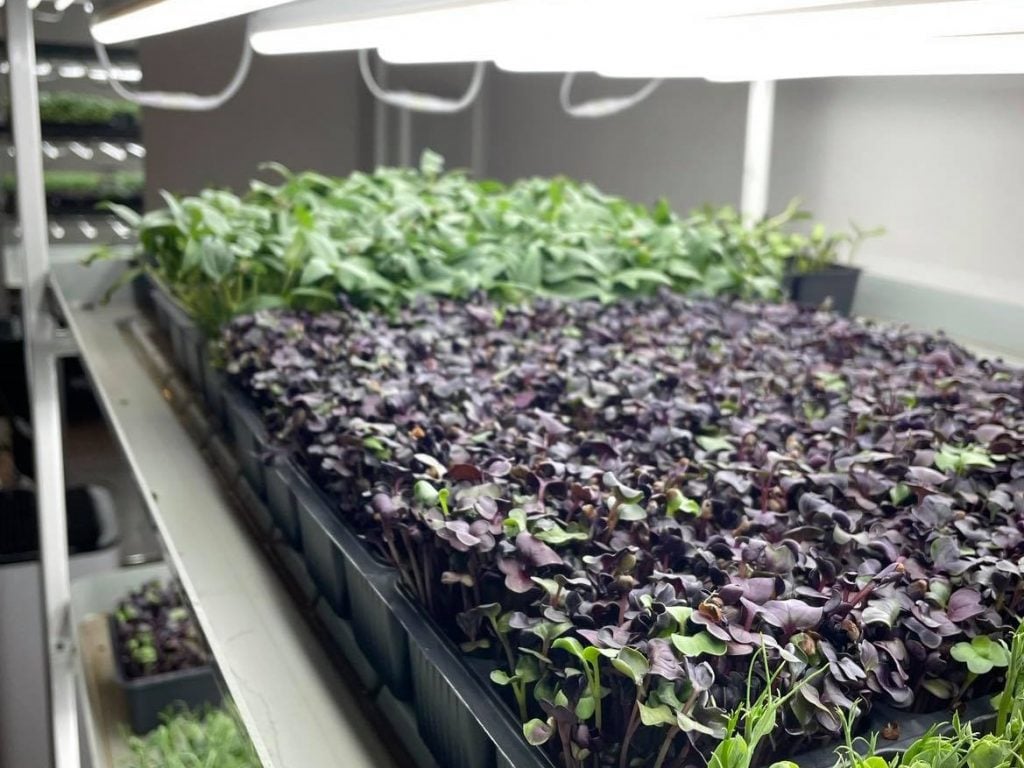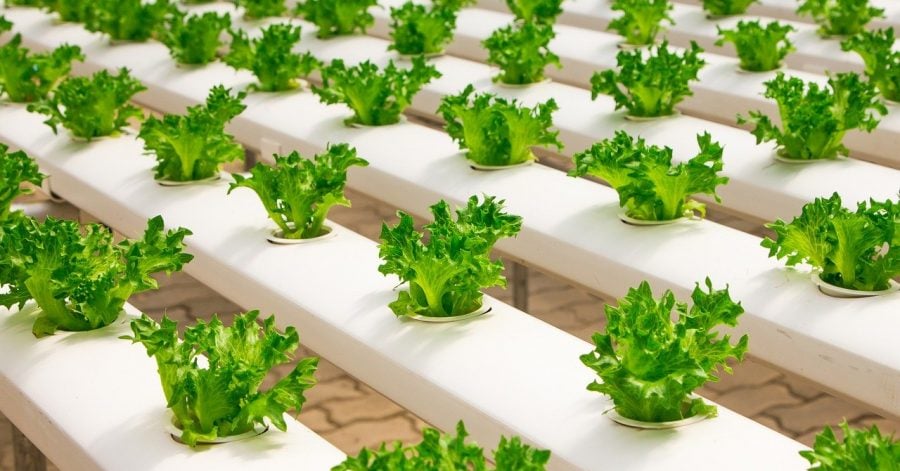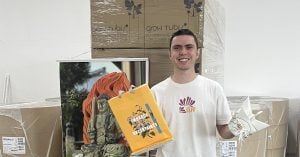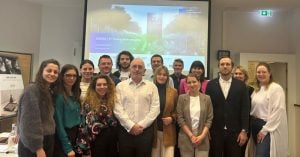On August 9, 2021, the IPCC published its sixth report assessing the state of the climate, the extent of human influence on resulting climate changes, and different scenarios for our planet based on forecasted levels of greenhouse gas (GHG) emissions. In Southeast Europe, one of the sectors most affected by extreme climate and weather events is agriculture. Leveraging innovations such as hydroponics urban farming may be one way to increase our resilience against climate change, as well as contribute to reversing the current direction.
Events such as extreme temperatures, drought, flooding caused by heavy rains, and powerful winds can significantly lower production levels. In vulnerable countries and communities, such losses in production can cause havoc, set back economic development and throw people into hunger and poverty. At the same time, agriculture is a big contributor to the GHG emissions that fuel climate change.
Hydroponics – or horticulture without soil – emerges as a solution for growing food with minimum resource dependency and footprint on the environment. The first systems were developed as a way to improve the consistency of producing, facilitate crop management and harvesting, and obtain better crop yields and quality.
Yet vertical hydroponics urban farming can achieve the sort of effectiveness that also helps tackle some of the challenges in traditional agriculture – at least for certain crops. Nutritious food, such as greens and certain vegetables and fruits, can be grown in climate-controlled environments, while saving precious resources such as water and land. Hydroponics has already been successfully applied to leafy greens, strawberries, tomatoes, and even bell peppers, in limited experiments. The system only uses mineral nutrients, small amounts of water, and light.
Today, The Recursive talks to Catalin Manolache, who will walk us through the founding of CRiSP, and a micro-green urban farm using vertical hydroponics, from Bucharest, Romania. Catalin shares more about the role that hydroponics can play in producing healthy and sustainable food, especially in vulnerable, climate-sensitive regions.
The Recursive: How did you start on this journey?
Catalin Manolache: CRiSP is a micro-green urban farm located in Bucharest. It has started out of a passion for agriculture which I had as a kid. I was spending my summers with my grandparents where we were always working in the garden or working the fields. Since those early days, I have grown this passion for agriculture. Later on, I also obtained a Master’s degree in horticulture.
Last year, I decided to test some new ways of doing agriculture and I focused on hydroponics. It started as a hobby. I bought some kits that I used to grow microgreens in the kitchen. Soon after, I saw an opportunity with a company from Romania that was providing consultancy, all the equipment, and the input that you need to develop a business in the area. I took a chance and scaled my kitchen-based urban garden. This is how CRiSP was born.
I bought a whole new kit with some new input and started to grow microgreens for the restaurant business in Bucharest in a 30 metres square location. We launched in April this year.
To start with, our main focus is on restaurants. We want to provide them with the best quality merchandise. This is inherited in the hydroponics system, as it results in very good quality produce.
Our agricultural and food systems are under stress from climate change, coupled with a growing population. How can vertical hydroponics urban farming tackle some of these challenges?
Our mission is to promote a sustainable way of living, through healthy, organic and locally produced food. The products we grow are healthy for our bodies, but also for the environment.
Through vertical hydroponics farming, you reduce resource use and waste from production. For instance, you reduce around 95% of the water you normally lose in production. You also minimize waste from leftover products because we only produce for the orders we take. We don’t produce more than we need.
We also try to promote the principle of farm-to-fork, by minimizing the distance between the producer and the consumer. We want to educate people around the fact that they can buy food produced in their region, from local producers. That’s why we grow our products in the city. We aim to deliver as close to your neighborhood as possible. This also minimizes delivery times and saves carbon emissions that result from transportation.
With hydroponics, you can also grow food anytime, anywhere, at any temperature. You do not depend on the climate outside. Instead, you have a climate-controlled environment in your urban farm.

Have you experienced any challenges with selling hydroponics-grown food so far?
It’s an innovative way of doing agriculture and some people don’t understand how it works yet. Some people are led to think that hydroponics-grown food contains chemicals, when it is actually not the case. With this system, you only need water, some nutrients, which are organic, and light. We don’t use any pesticides and insecticides. It’s not rocket science and it is totally safe.
How has hydroponics agriculture developed in the region in the last few years?
It’s a growing business in the agricultural sector. In Romania, it’s not very well promoted as a way of doing agriculture. If in Western Europe hydroponics is recognized and appreciated, in Romania, we still need to educate people on its benefits and how it can be implemented.
There are some companies and some scientists who are advancing our adoption of hydroponics. Not too many yet, but this will change in the near future. I already saw some examples from Bucharest, Iasi, Timisoara, and near Curtea de Arges. The technology and the products are getting into the hands of the people more and more.
I believe hydroponics urban farming has huge potential, especially in climate-sensitive countries, in areas where food cannot be grown outdoors. And given the fact that the global population will continue to grow, food supply will become an even bigger issue to which hydroponics systems can offer a solution.
How did you finance the business?
For this level of micro-urban farming, I started with an initial investment that many people can afford, of around €4000. This is the beginning of a longer project. We’ve started small scale and from here on we will work our way towards becoming a bigger producer.
Further on, I think that the government needs to put in some efforts to support progress in this direction. There is no large-scale hydroponics farm in Romania that I know of. And this is partly because people are waiting to access European funds. There are no government incentives yet that provide you with the opportunity to access funds in this business area.
How do you plan to grow CRiSP further?
My vision for the future is to create an urban farm container, which is very popular in Western Europe. This is a shipping container where you can grow a vertical farm. The biggest advantage is that you can move it to convenient locations – to your backyard, a supermarket parking lot, or the city center. This allows you to sell fresh produce to all the people and restaurants in your area. To bring the farm to fork. And if you need to increase your production, you can add another container or expand the current one. You just need access to water and electricity.
What has inspired you along the way?
At first, it was my passion for agriculture and I wanted to see how I can apply it in the city where I live. What keeps me going is that it is innovative and has great prospects of becoming part of the “new normal” in the future. Not tomorrow or next year, but in 10 years from now it can happen, especially given the measures we will take around the world to mitigate climate change.








